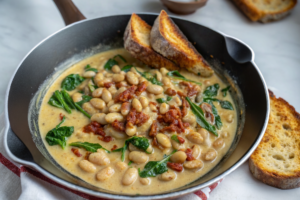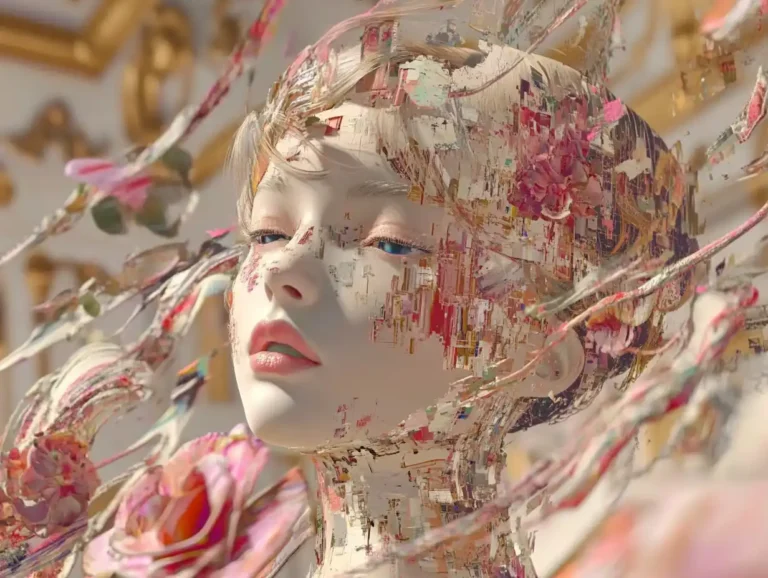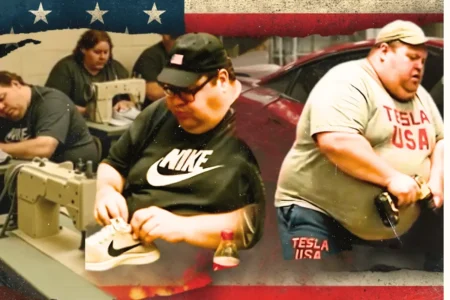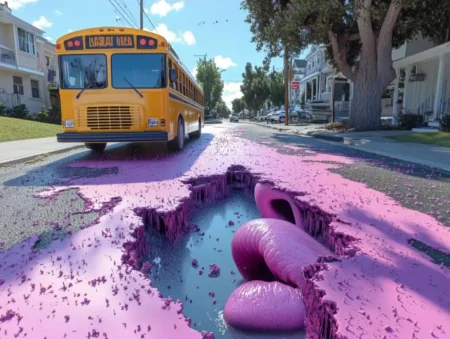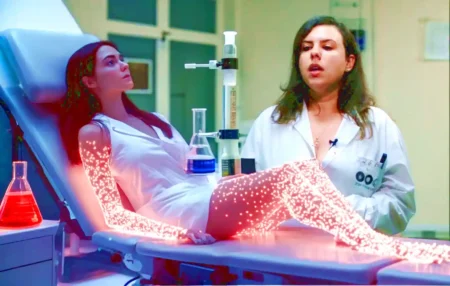A few years ago, most people would have laughed if you told them a robot could paint a beauty and sell it for a lot of money. It is now a fact. Art made by AI is getting a lot of attention, starting arguments, and even winning events. Now comes the important question: Is AI killing talent, or are we seeing the start of a whole new art movement?
The Rise Of AI-Generated Art
AI is leaving its mark on everything from paintings and sculptures to digital works of art. Ai-Da is a robotic robot that makes surreal images and is one of the most famous AI artists. There are cameras in Ai-Da’s eyes and programs in her brain. She draws, paints, and even sculpts. She’s not the only one. AI tools like DALL-E and Midjourney are making beautiful works of art that look like professional artists made them.
A few of these pieces have sold for one thousand or even a million dollars. A piece made by AI called “Portrait of Edmond de Bellamy” sold at Christie’s for a huge $432,500 in 2018. People are paying attention. Does this mean AI is now an artist, though?
Is AI Art Really Art? A Deeper Dive
AI-made works are shaking up the world of art, and at the heart of the argument is a simple question: What makes something art? Is it the skill, the feeling, or just the act of making something? We need to look at three main things to really know if AI art is real art: creativity, purpose, and ownership.
1. Can AI Be Truly Creative?
People have long thought that our ability to think, come up with new ideas, and make something new appear was something that only humans had. AI, on the other hand, does not think or imagine like people do. It looks at a huge amount of current art, finds patterns, and then uses those patterns to make new pictures.
But is that really different from how artists make art? Think about well-known artists like Pissarro. Before he made Cubism, he was inspired by art from Africa and traditional Europe. The way AI works is similar: it learns from old works and makes new ones. What’s the difference? Picasso chose to do something different. Artificial intelligence (AI) uses random odds to make something that looks new but wasn’t made on purpose.
Some people say that AI innovation is like improvising in jazz. A guitarist takes ideas from other pieces of music, combines them in new ways, and makes something completely new. AI can definitely surprise us with what it comes up with, but the main difference is that it doesn’t do it on purpose; it just happens upon something strange while processing data.
2. Intent: The Soul Of Art
There has always been a deep connection between art and life. A picture can show the struggles of the artist, a song can show love and loss, and music can make people cry. AI, on the other hand, does not have feelings. It doesn’t feel pain, have dreams, or show feelings.
For some, this is what makes pictures made by AI different from real art. Even though Ai-Da has cameras and a mechanical arm, it can’t feel the beauty of a sunset or the pain of a broken heart. It only gives results based on code. In this way, some people say that works made by AI are more like well-thought-out algorithms than real works of art.
Still, not all art makes you feel something. Some abstract art is just about shape, color, and style, with no deep message behind it. If we can accept that kind of art, then why not art made by AI? After all, Duchamp’s Fountain, a named toilet, became a classic even though it wasn’t about anything personal.
3. Who Gets The Credit? The Problem Of Authorship
Who is the artist if an AI makes a beautiful piece of art? The AI? Someone who wrote the code for the algorithm? The artists whose work it learned from? This is one of the most controversial pieces of AI art.
Lots of AI models are taught on very large sets of data that contain the work of many artists, often without their approval. Some artists say that AI is just reusing their work without giving them credit, which makes it a high-tech form of theft. Others, like artist Sougwen Chung, do things differently. They train AI only on their work and use it as a personal creative helper instead of a random creator.
Authorship is a problem in more areas than just art. Tracks made by AI are already making waves in the music world. Who holds the rights to a hit song written by an AI? Around the world, legal systems are still trying to catch up, and the question of who wrote AI is still open.
The Human Touch: What’s Missing?
People often say that AI art doesn’t have any meaning. People who are artists put their feelings, problems, and life events into their work. AI? Not really. It makes pictures based on patterns, not on how you feel. Yes, it can copy styles and make something beautiful to look at, but does it have a soul?
Marcus du Sautoy is a mathematician who thinks AI can actually help people be more creative. He says that people tend to get stuck in ways that they use over and over again. AI could help artists get out of their comfort zones by giving them results that are unpredictable and surprising.
AI: A Tool, Not A Replacement
Even though AI is getting a lot of bad press, many artists still see it as just another tool. AI can be used to improve innovation, not replace it, just like a pen or a camera. In fact, some artists are now working with AI, seeing it as a partner in their work rather than a rival.
Eva Jäger is a collector of AI art. She doesn’t think that AI art will replace other kinds of art. Instead, it makes new things possible. She thinks that the process, not just the finished art, is what makes it magical. Who made the AI? What do they want to find? There’s more to those questions than just the finished picture.
What’s Next For AI Art?
Art made by AI isn’t going away. In fact, more and more people are doing it. In LA next year, the world’s first art gallery that only shows works by AI will open. AI works are being shown in museums and shows along with regular works of art. In the world of art, AI is making things different, no matter how people feel about it.
Then, is AI the end of good ideas? Or the start of something really big? There may be a middle ground where the truth lies. Art has always changed, and AI is just the newest part of that long, bumpy history. Creativity will never go away as long as people keep making things, pushing themselves, and coming up with new ideas.



